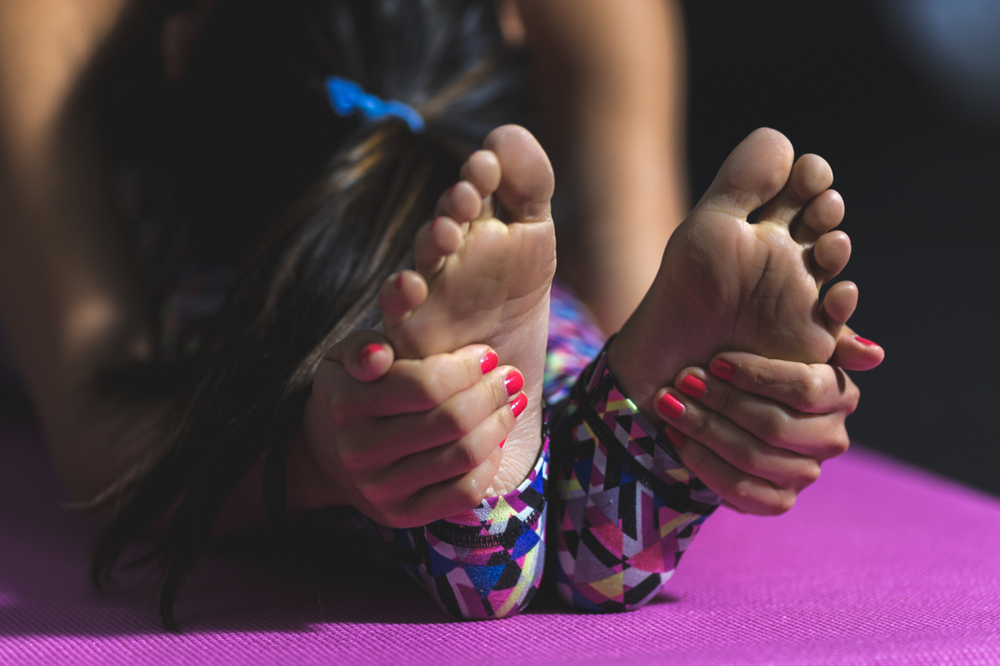
We talk about Freedom of Movement as one of the essential freedoms for children in Montessori classrooms. We offer materials, equipment and furnishings matched to the general physical size of the children we serve, and encourage them to move freely through the room. We allow children to sit, stand, lie down, kneel, and stretch across their work spaces, knowing that their development, both physical and intellectual, is linked to their bodies' freedom to move.
But the need for movement does not end in childhood. It's not a finite window like some other developmental needs. Indeed, throughout our lives, we need to move. We move to maintain our bodies' functions, to be able to continue to move. We move to influence our cardiovascular systems, our muscles, our hormones, our digestion, to pump lymph through our bodies and to help move blood back from our feet and hands. We move to maintain our strength, to build our energy, to sleep better, to maintain a healthy weight, and to reduce stress. When we move regularly, we think better, we communicate differently, and we are more at ease.
In our classrooms, though, we're trying to melt into the background. We move carefully, silently, unobtrusively. We sit on chairs that don't fit us or we stand for long periods of time. We get to the children's level, and in doing so, we strain our backs, we wreck our posture, and we cause ourselves more stress.
Remember: your ability to continue moving freely, gracefully and unobtrusively is a core part of your job. Teaching in a Montessori environment should not cause so much strain on your body that you are no longer able to teach in a Montessori environment. With your colleagues, commit to healthier movement for adults:
1. Start a morning stretch group with your colleagues. Take just five minutes every morning before the children arrive to join together in a circle and move through a simple routine of stretching. While these are often quiet times, they don't have to be. Teachers can rotate calling the movements, and this can be an easy time for adults to connect and laugh together before the school day begins.
2. Set a reminder to move throughout the morning work cycle. If you prepare a yoga mat and simple movement cards as a lesson for the children, you can choose that material yourself throughout the morning, modeling for children your own engagement and supporting your body's needs along the way. But even if you choose to touch your toes five times once each hour, you'll be moving with more mindfulness. In a three hour work cycle, you should move your body intentionally at least once an hour.
3. Find time for walking meetings. Faculty meetings, planning meetings and time to make sense of observations can all be managed on your feet. Walking meetings often also allow for a different caliber connection, removing the inauthentic barriers of tables and desks and replacing them with the literal space and time for reflection. In a face to face, table meeting, if you need time to think or be silent, you're faced with awkward silence. In a walking meeting, quiet time to reflect and process what's been said and to think about how you want to respond comes more naturally. And, you have the opportunity to collaborate with your colleagues as you enjoy the outdoors and move your bodies together.
4. Move before you think. Research suggests that disrupting our thinking patterns with new movement allows us to think more creatively. Especially when you're feeling overwhelmed, overworked or like you don't have enough time, moving your body, even for twenty minutes, can help relieve stress and initiate new thinking.
5. If you're in chronic discomfort or pain, talk to professionals. Don't presume that your back has to hurt because you're moving from the floor to standing and back again throughout the day. If your feet are constantly troubling to you, find professional support in your community. In the same way that children change into indoor shoes to demonstrate respect for their work and learning, you can have healthy shoe, chair and movement habits that you incorporate mindfully into the class routine. And you'll be modeling the kind of self-care you know you want to instill in your students.
Movement matters, and moving freely without pain means you get to teach longer and do this work more joyfully. If you're hurting, find help. If you're in great shape, take advantage of the ways in which you can incorporate even more movement as a model for the children. And if you're somewhere in between, as most of us are, remember that, just like little changes go a long way.
#ForTeachers #teachertalk #selfcare
